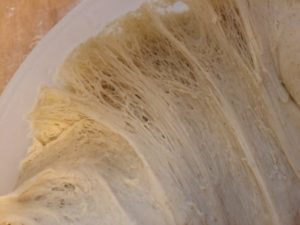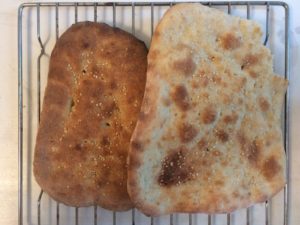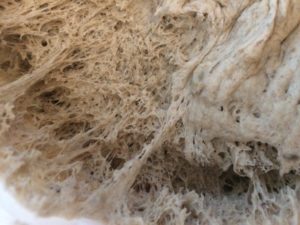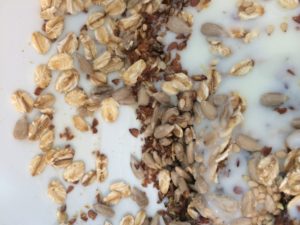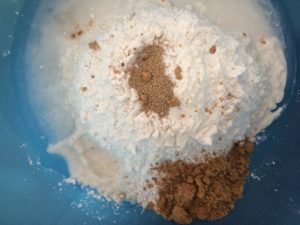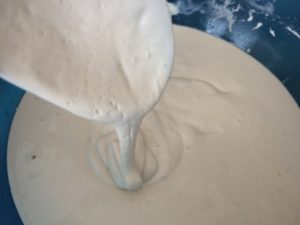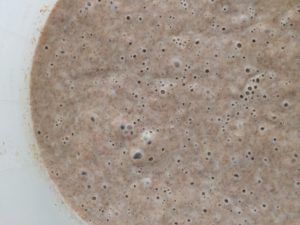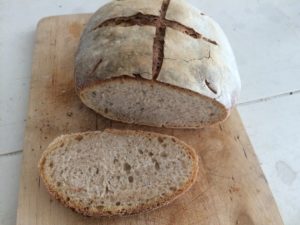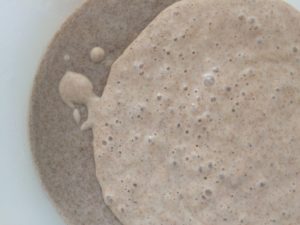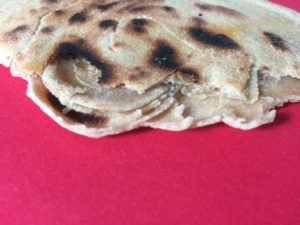In the following experiments I want to explore types of dough: yeast dough, sourdough, soda/baking powder dough and dough without leavening, main ingredient: wheat, wheat wholegrain, spelt, spelt wholegrain, rye, rye wholegrain, buckwheat, emmer, oats, teff, rice, maize/corn, cassava, lentil and millet and baking techniques: on the fire, on the grill, on a hot surface, surrounded in hot oven and steaming.
baking experiments with YEAST:
Sesame Yoghurt Buns
Breakfast Buns
Turkish Flatbreads
I started with Sesame Yoghurt buns, Breakfast buns and turkish Flatbread. Both flatbread and breakfast bun dough had a beautiful texture, the yoghurt bread was very sticky and thus very hard to handle. The biggest difference between the smooth dough and the sticky dough was the liquid-to-solid-ingredient ratio. The flatbread ingredients are 500g wheat flour, salt, sugar, olive oil, 2g dried yeast and 360g of water. The ingredients for the breakfast buns are 25g rye flour, 95g spelt flour, 350g wheat flour, salt, sugar, olive oil, 4g of fresh yeast and 300g of water. So in both recipes the amount of dry components is significantly higher than the amount of wet ingredients. The yoghurt buns had 150g wheat flour, 45g whole grain wheat flour, salt, 1,5g yeast and 200g of yoghurt, an almost equal amount of dry and wet components.
All these breads came out quite crispy and dry. I only have a microwave-sized oven, so the heat must be more direct then in a regular oven. I tried baking both flatbread and breakfast buns for a shorter period of time and they came out much better. The crust was still crispy but less hard, they where moister and still soft the next day and they smelled more intense.
The next experiment was Schüttelbrot, which bakes at only 200 °C (compared to 250°C for the other breads so far). It came out so good that we ate it straight away without the additional drying at 50° for 1 hour, which would have turned it into proper crispy Schüttelbrot. This way it reminded me of Vinschgauer Fladen, something I loved eating as a kid! I also made a bigger roll with the remaining dough and baked it, it came out very nice and fluffy. Maybe the other breads would´ve been better at this lower temperature as well?
Schüttelbrot
The next experiment was a very time intensive spelt wholegrain buttermilk bread with 2 pre-doughs that then got mixed together 14 hours later. The whole bread takes 27 hours.
mixture of pre-dough 1 / and pre dough 2 / comparison of both / mixture of dough 3 / pre dough 1 and 2 added to dough 3 and all kneaded together / rolled in sunflower seeds / after baking / a slice
The time intensive process definitely payed off, this was the tastiest yeast bread so far!
So what are the pre doughs for? Since wholegrain flour has a lot more nutrients than white flour it takes microbes longer to break the structure down and make the nutrients accessible for us to taste and to digest. One way to release these nutrients is by kneading bread for a very long time – 1 hour or longer. Another way is to have a pre dough (or “soaker”) that is non leavened. In this pre dough enzyme activity starts to increase and the sugar trapped in starch is starting to be released. This sugar later becomes accessible for the yeast as food, for caramelization of the crust during baking and adds more flavor to the bread. When the soaker gets mixed with the pre ferment (like a sourdough starter or a yeast mixture) it acts as a rocket fuel to quickly feed the bacteria and/or yeasts in the dough.
experiments WITH SOURDOUGH:
I got a rye sourdough starter from a nearby bakery, it was quite liquid. The first sourdough bread I made with it came out very dense and flat. After feeding the starter for a while it became nice and bubbly:
Before and after feeding for some days.
first sourdough bread.
The second sourdough bread came out a lot better, but still a bit flat and dense (it was sticking to the bowl when i took it out to bake it and probably lost a lot of bubbles in my attempt to shape it into a ball again).
second sourdough bread
Third sourdough bread. It came out wonderful – finally!
Here you can see the difference of a rye starter and a wheat starter.
Experiments with UNLEAVENED BREAD:
Next I tried an east african Chapati recipe, without any leavening agent.
You can see that by rolling the Chapati dough into coils it comes out layered.
The next experiment was making mochi, a Japanese steamed rice cake using glutinous rice flour, that makes the dough sticky and chewy.







